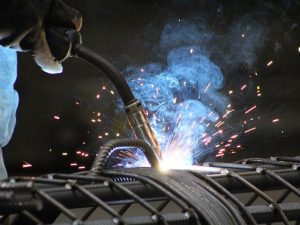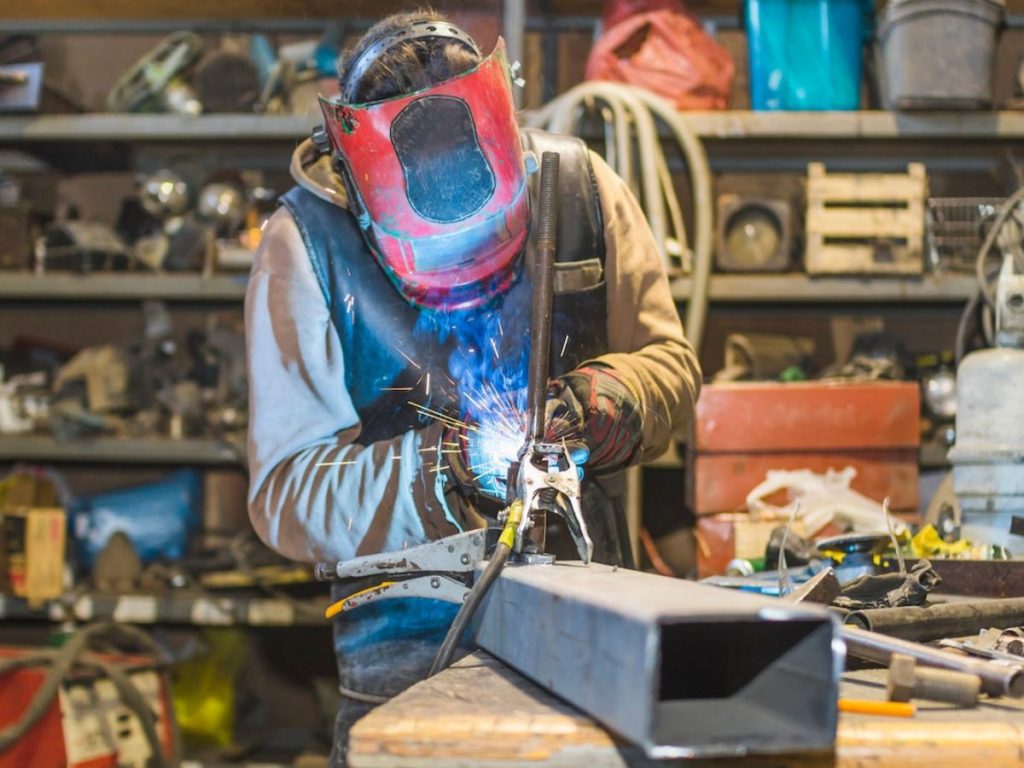Welding is a process in which two pieces of metal are joined together using heat and pressure. There are many different welding methods, but wire welding is one of the most common. In this type of welding, an electrode made of metal wire is used to create an arc between the two pieces of metal that are being joined. The arc creates heat, which melts the metal and joins the two pieces together.
Wire welding is a popular choice for many projects because it is relatively easy to learn and it can be used on a variety of metals. It is also a versatile method that can be used for both small and large projects. If you’re considering taking up welding as a hobby or profession, wire welding is a great place to start.
How Does Wire Welding Work?
As we mentioned before, in wire welding an electrode made of metal wire is used to create an arc between the two pieces of metal that are being joined. The arc creates heat, which melts the metal and joins the two pieces together.
In order to create the arc, the electrode must touch the metal that you are trying to weld. Once the electrode touches the metal, it will complete an electrical circuit. This will cause a current to flow through the electrode and into the metal. As the current flows, it will create heat. This heat will then vaporize any material that is touching the electrode, creating an area known as a weld pool.
The size of the weld pool will depend on the amount of current flowing through the electrode. The more current that flows, the larger the weld pool will be. In order to create a strong joint, it is important to maintain a consistent size weld pool throughout the entire welding process.

The Advantages of Wire Welding
One of the biggest advantages of wire welding is its portability. Unlike other welding processes that require expensive and unwieldy equipment, wire welding can be performed with a small portable welder. This makes it an ideal choice for projects that need to be performed in tight spaces or for those who don’t have access to a dedicated welding shop. In addition, wire welders are relatively inexpensive, so they’re a great option for those on a tight budget.
Another advantage of wire welding is its versatility. As mentioned above, it can be used on a variety of materials—steel, aluminum, and stainless steel—so it’s ideal for projects that require working with more than one type of metal. In addition, wire welders can be used for both Mig (metal inert gas) and Tig (tungsten inert gas) welding applications. This makes them even more versatile and able to tackle a wider range of projects.
Wire welders are also known for being easy to use. The electrode is fed automatically into the welder, so there’s no need to stop and start the process to add new electrodes. This makes wire welders much faster and easier to use than other types of welders. In addition, because the electrode is fed automatically, it’s less likely to break or get damaged during the welding process.
The Disadvantages of Wire Welding
Wire welders do have some disadvantages that you should be aware of before deciding if this is the right type of welder for your needs. One potential downside is that wire welders typically don’t have as high of power output as other types of welders. This means that they might not be able to handle thick metals or metals that have high heat resistance. If you’re planning on working with thicker metals or metals that have a high heat tolerance, you might want to consider another type of welder such as a stick or TIG welding.
Another potential disadvantage of wire welders is that they can create more spatter than other types of welders due to the way the electrode is fed into the machine. Spatter is bits of molten metal that are ejected from the arc during the welding process. While this isn’t necessarily a deal-breaker—and can actually be remedied with proper technique—it’s something to keep in mind if you’re looking for a welder that has minimal spatter output.
What are the Different Types of Wire Welding?
There are three main types of wire welding – gas tungsten arc welding (GTAW), gas metal arc welding (GMAW), and flux-cored arc welding (FCAW). Each type has its own advantages and disadvantages that make it better or worse for certain projects.
– Gas Tungsten Arc Welding (GTAW)
Gas tungsten arc welding, also known as TIG welding, is another type of wire welding that uses a non-consumable tungsten electrode to create the weld. GTAW is considered to be the highest quality type of weld because it results in very little contamination of the weld area. GTAW is often used on stainless steel and aluminum because it produces very little heat distortion.
Disadvantages of GTAW
However, GTAW does have some disadvantages. First, it is a very slow process compared to other types of welding. Second, GTAW requires more skill and experience to master than other types of welding. Finally, GTAW is not well suited for large projects because it can be very time-consuming.
– Gas Metal Arc Welding (GMAW)
Gas metal arc welding, commonly known as MIG welding, is a type of wire welding that uses a continuously fed wire electrode and an Argon-oxygen gas mixture to weld metals. MIG welding is one of the most popular types of welding because it is relatively easy to learn and can be used on a variety of materials, including steel, aluminum, and stainless steel.
Disadvantages of MIG Welding
MIG welding does have some disadvantages, however. First, it is not well suited for outdoor use because Argon gas can be blown away by the wind. Second, MIG welders are more expensive than other types of welders. Finally, MIG welding can be difficult to master if you don’t have experience with it.
– Flux Cored Arc Welding (FCAW)
Flux-cored arc welding is similar to GMAW but uses a self-shielded electrode that contains flux within the core. This flux protects the weld from contamination as it does not require an external gas shield. FCAW can be performed in all positions and can weld metals that are up to 1 inch thick making it one of the most versatile methods. However, this method can produce large amounts of smoke and fumes making it difficult to breathe while working.
FCAW is similar to GMAW, except that the electrode contains a core of flux material. This flux material shields the arc from contamination, eliminating the need for an external gas supply.
FCAW is typically used for outdoor applications or for welding metals that are difficult to weld using GMAW, such as aluminum or stainless steel. It’s also commonly used in heavy industries, such as shipbuilding and construction.
Like GMAW, FCAW is a relatively easy process to learn and can be used on a variety of metals.
Conclusion:
Wire welding is a versatile method that can be used on many different materials in many different settings. There are three main types of wire welding – gas tungsten arc welding (GTAW), gas metal arc welding (GMAW), and flux-cored arc auto darkening helmet mask (FCAW). Each type has its own advantages and disadvantages that make it better or worse for certain projects so it is important to choose the right type for your project needs.

